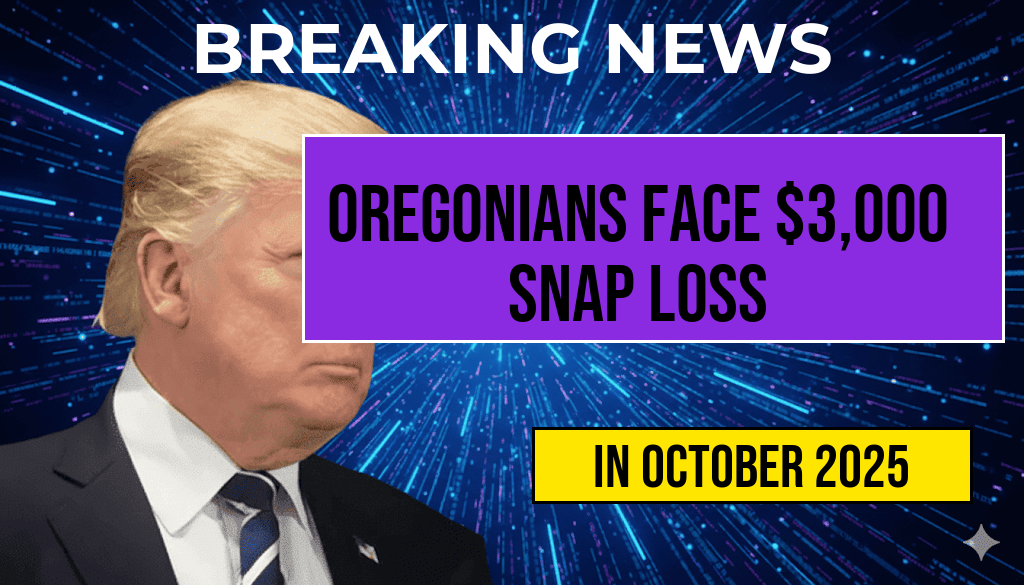More than 3,000 Oregonians are expected to face significant reductions in their Supplemental Nutrition Assistance Program (SNAP) benefits, with some losing more than $3,000 annually. The recent eligibility cuts, implemented as part of federal and state policy adjustments, have sparked concern among advocates and affected individuals alike. These changes, which narrow the criteria for receiving assistance, threaten to push many households into greater food insecurity during a period of rising living costs. The impacted residents include vulnerable populations such as seniors, disabled individuals, and working families who rely heavily on SNAP to meet basic nutritional needs. As Oregon grapples with these reductions, officials and community organizations are assessing the potential ripple effects on local food banks, healthcare, and social services.
Understanding the Scope of the Benefit Reductions
The new eligibility criteria, enacted through federal legislation and state administrative updates, aim to tighten income and resource limits for SNAP. According to data from the Oregon Department of Human Services (DHS), approximately 3,150 households across the state will experience benefit decreases, with some seeing reductions exceeding $250 per month. For many, this amount represents a substantial portion of their monthly food budget, potentially forcing difficult choices about nutrition and household expenses.
Factors Contributing to the Cuts
Policy Changes and Federal Guidelines
- Implementation of stricter income eligibility thresholds.
- Enhanced work requirements for able-bodied adults without dependents.
- Adjustments to asset and resource limits, reducing the number of qualifying households.
Economic Context and State Responses
- Rising inflation rates have increased grocery prices, intensifying the impact of benefit reductions.
- State officials emphasize the goal of aligning SNAP policies with federal standards to curb program misuse.
- However, critics argue that these measures overlook the growing need for food assistance amid economic strain.
Impact on Oregon Households and Communities
For affected families, the loss of over $3,000 annually translates to limited access to nutritious food, especially for those facing health challenges or caring for children. Community organizations warn that these reductions could lead to an increase in food insecurity, which already affects an estimated 1 in 8 Oregonians, according to Feeding America (Feeding America). Food banks across the state are preparing for heightened demand, with some reporting a 20% uptick in visits since the policy changes were announced.
Potential Broader Consequences
Health and Well-Being
- Reduced food access may lead to malnutrition, especially among vulnerable groups such as seniors and children.
- Increased health issues linked to poor diet, like diabetes and hypertension, could strain healthcare resources.
Economic and Social Effects
- Households facing benefit cuts may divert funds from other essentials, such as housing or healthcare.
- Local economies might experience a downturn, as decreased purchasing power affects small businesses and food retailers.
Community and Policy Responses
Community organizations, including food banks and social service agencies, are mobilizing to mitigate the impact. Initiatives include emergency food distributions, outreach programs to inform residents of available resources, and advocacy for policy adjustments.
State and Federal Perspectives
| Criteria | Previous Standards | Current Standards |
|---|---|---|
| Income Limit | 130% of Federal Poverty Level | 125% of Federal Poverty Level |
| Asset Limit | $2,250 (or $3,500 for households with elderly or disabled members) | $2,000 (or $3,750 for elderly or disabled members) |
| Work Requirements | Able-bodied adults without dependents required to work 20 hours/week | Increased enforcement of work requirements and time limits |
Officials from the Oregon Department of Human Services maintain that these policy shifts are necessary for program integrity and fiscal responsibility. Meanwhile, advocacy groups argue that the timing coincides with economic hardships faced by many Oregonians, further exacerbating food insecurity.
Looking Ahead
The ongoing debate centers on balancing fiscal sustainability with the imperative to support vulnerable populations. As the state monitors the real-world impacts of these eligibility cuts, there is growing pressure on policymakers to consider targeted measures that protect low-income families without compromising program integrity. Meanwhile, residents affected by the reductions are encouraged to explore additional assistance options, including local food pantries, community programs, and emergency aid services.
For more information on SNAP eligibility and resources, visit the U.S. Department of Agriculture’s SNAP page or the Oregon DHS website.
Frequently Asked Questions
What is the main reason for the benefit loss faced by Oregonians under SNAP?
The benefit loss is primarily due to SNAP eligibility cuts that have been implemented, reducing the amount of assistance available to many Oregonians.
How many Oregonians are estimated to be affected by these SNAP benefit cuts?
Over 3,000 Oregonians are expected to face a benefit loss of more than $3,000 as a result of these eligibility reductions.
What impact will these SNAP cuts have on affected individuals and families?
The cuts will likely cause financial hardship for impacted individuals and families, making it more difficult to afford food and other essentials, and potentially increasing food insecurity.
Are there any efforts or programs in place to help those affected by the SNAP reductions?
Some local organizations and advocacy groups are working to provide support and resources to those impacted, but the effectiveness and reach of these efforts vary.
What can affected individuals do to mitigate the impact of these SNAP eligibility cuts?
Affected individuals are encouraged to review their benefit eligibility, seek assistance from community resources, and stay informed about potential policy changes or program updates that could provide additional support.






